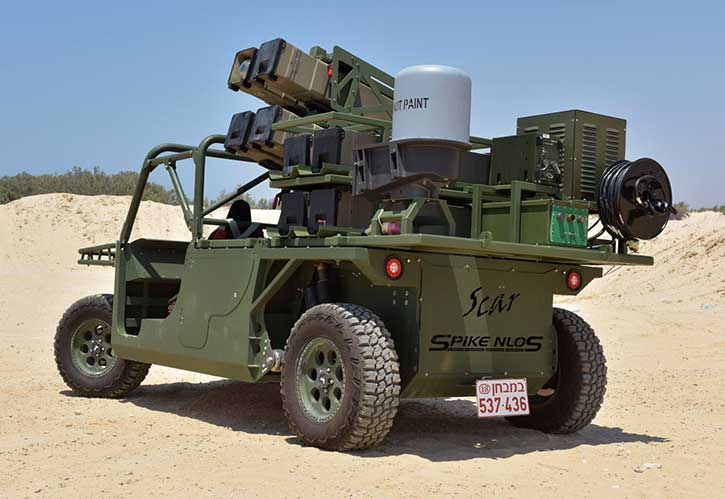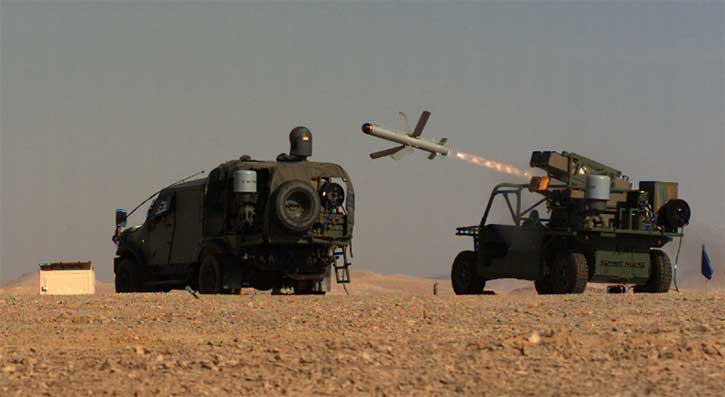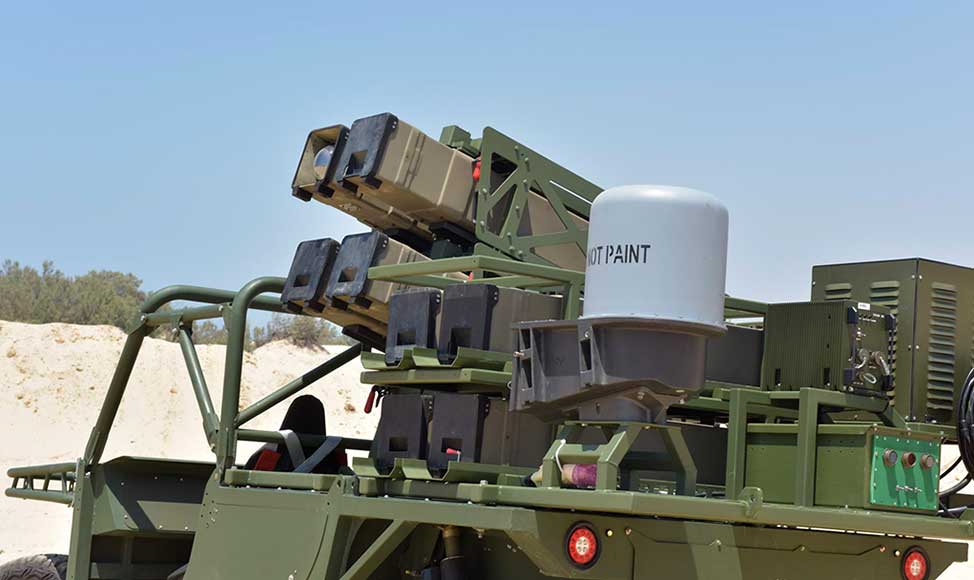RAFAEL has tested a new lightweight launcher for its Spike NLOS missile system, designed for integration on light offroad vehicles. For the launcher qualification testing the system was integrated into the Tomcar TE6 all-terrain, hybrid-electric powered vehicle, demonstrating unique operational capabilities for the system. RAFAEL developed this application to meet a specific customer requirement, making it the 47th vehicular configuration of the Spike missile family.
At a weight of 1,350 kg, the launcher and eight missiles are mounted on the small vehicle, enabling the small crew to attack ground targets with pinpoint precision from 30 km away. The basic system carries four ready to launch missiles and four spares. The system can change the configuration and number of missiles used to meet the space and size constraints of small ATVs. While the first installation was tested on the Tomcar, the system can also be mounted on other all-terrain vehicles such as the Flyer, GMV-1.1 and similar ATVs.
TOMCAR is an Internally Transported Vehicle (ITV) able to carry a payload more than its curb weight, making it an optimal platform transporting vehicles, equipment, and soldiers in the same aircraft. The new TE6 version has three seats, and large front and aft cargo decks for use as a mule, or as an assault vehicle supporting weapon platforms. The Spike NLOS uses the new tactical tomcar TE6 platform, a hybrid-electric powered, ultra-quiet platform that has two electric motors and four-wheel drive, a payload carrying capacity (1475 kg).

Supported by RF video datalink, Spike NLOS missiles can engage targets that are hidden from direct line of
Mounted on an ultra-quiet hybrid-electric powered vehicle Spike NLOS can be inserted by helicopters or V-22, deep in the enemy area, far from their assigned targets. They can travel 15 minutes (about 25 miles) on battery power, or use the diesel generator for charging.
For internal carry in a
Until now the Spike NLOS was integrated on larger vehicles, such as the Plasan Sandcat, M-113 APC and M-60 tank. The integration on light, all-terrain vehicles enables Special Forces a low-weight, highly maneuverable and air deployable precision attack capability, that can be inserted deep into enemy territory using CH-47 and CH-53 helicopters using sling loads or internal carriage, or V-22 Osprey tilt-rotor aircraft.











